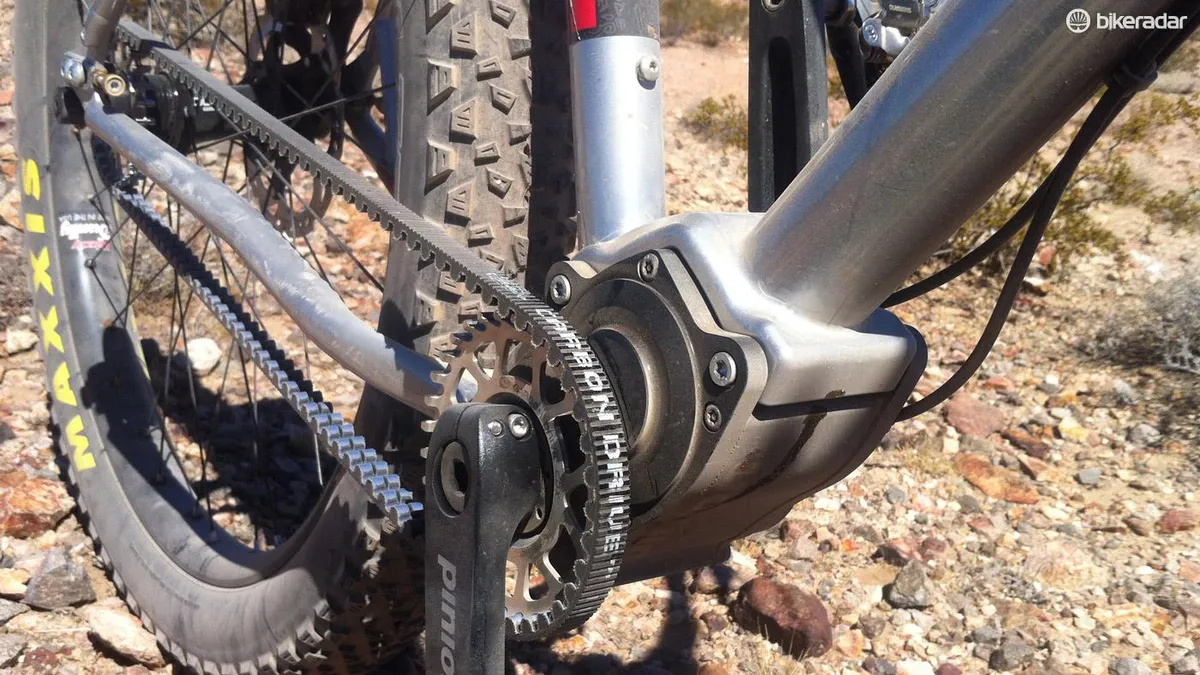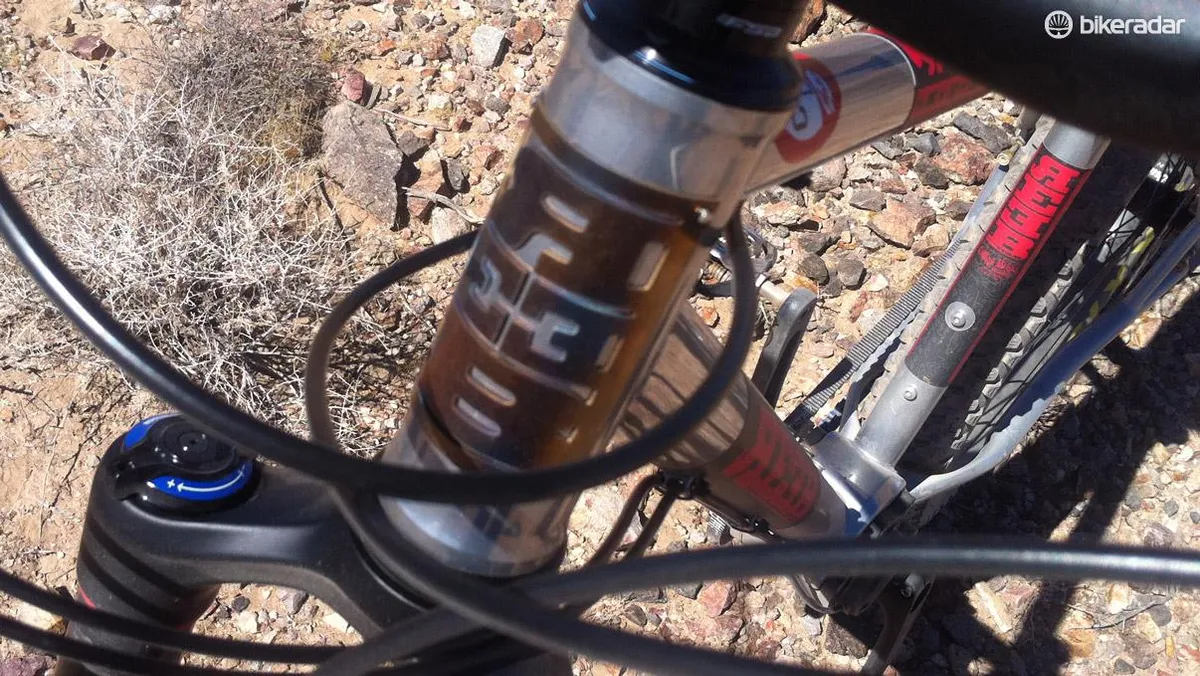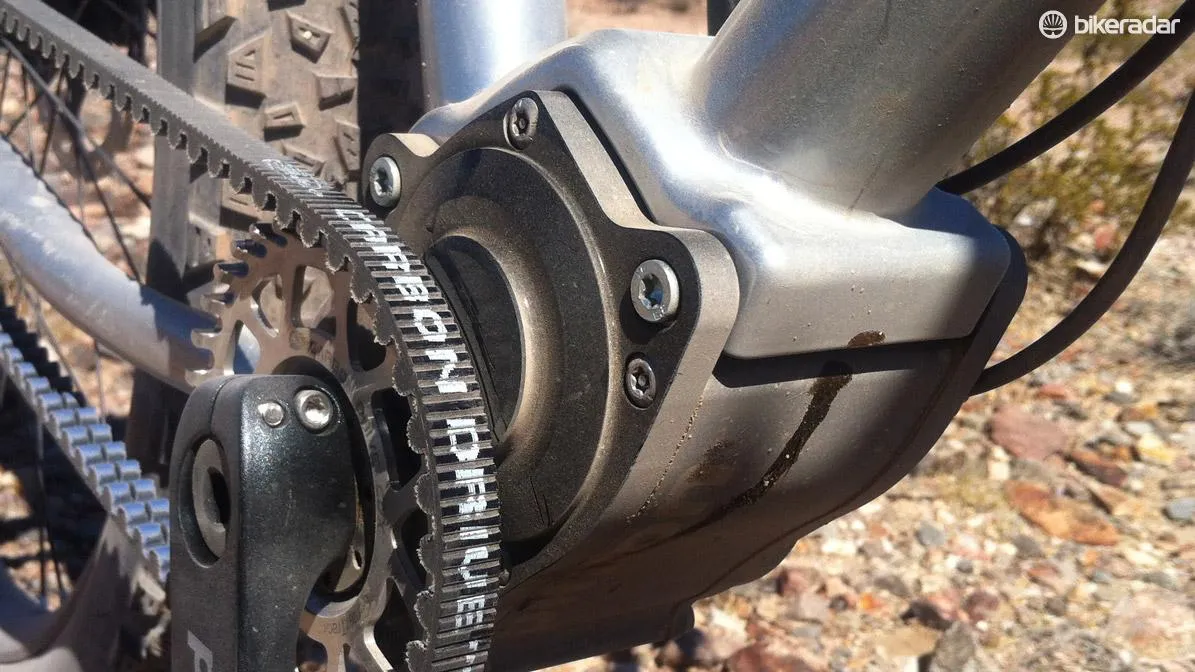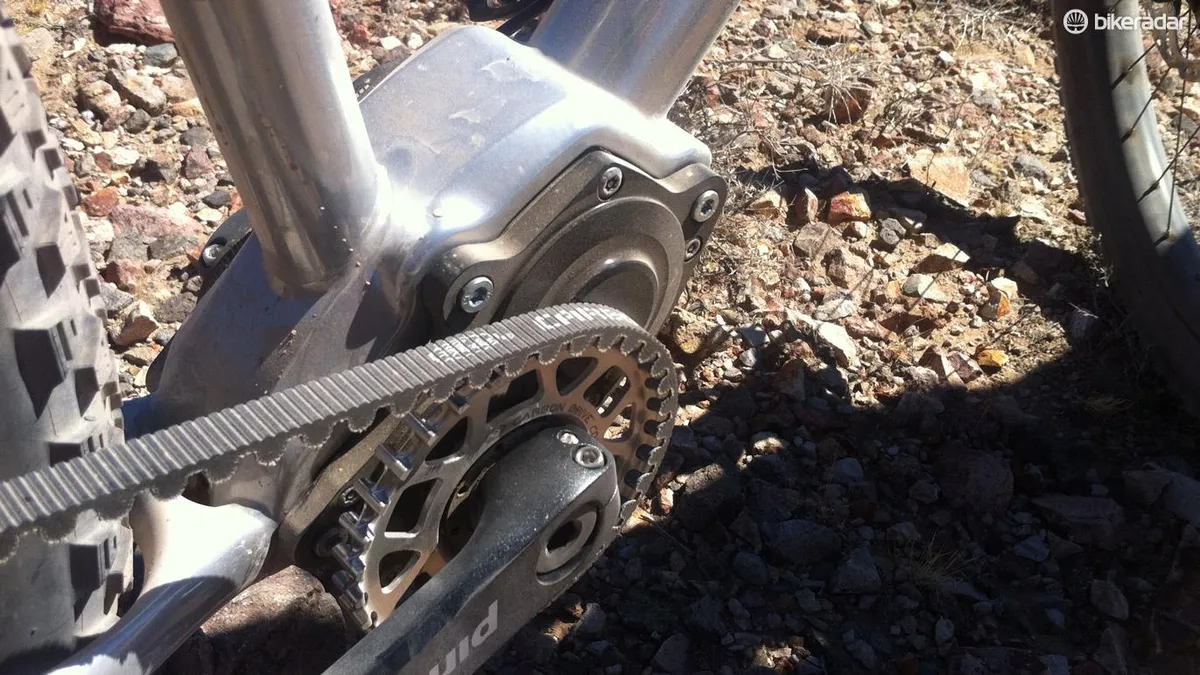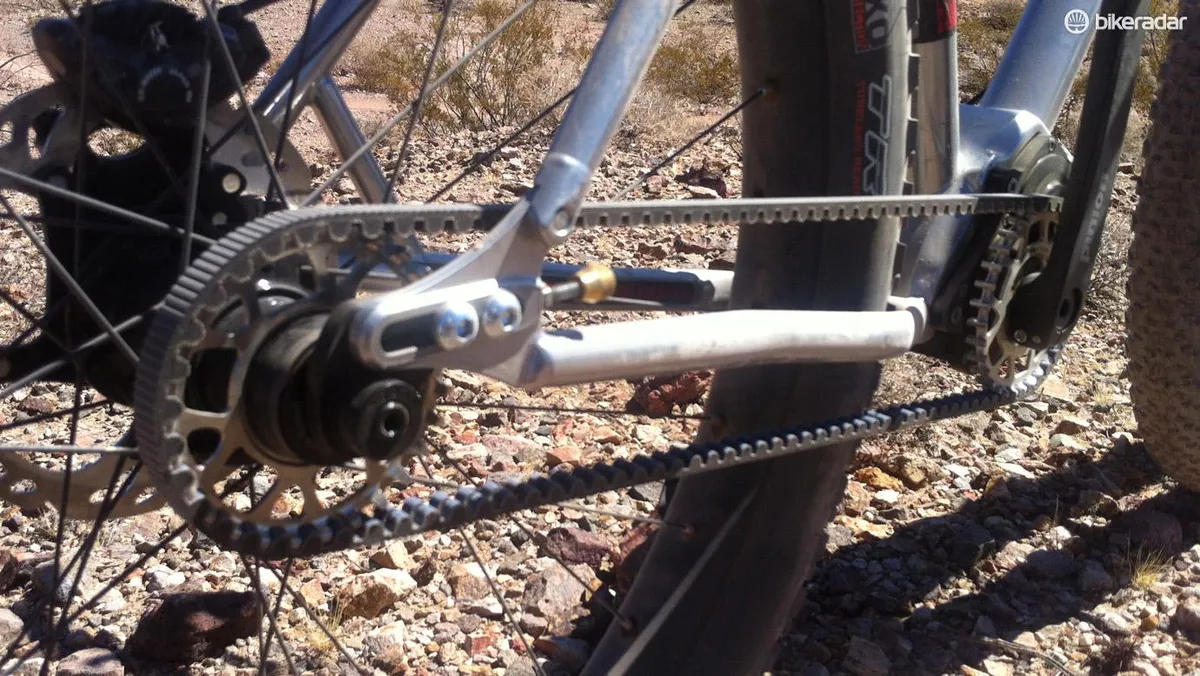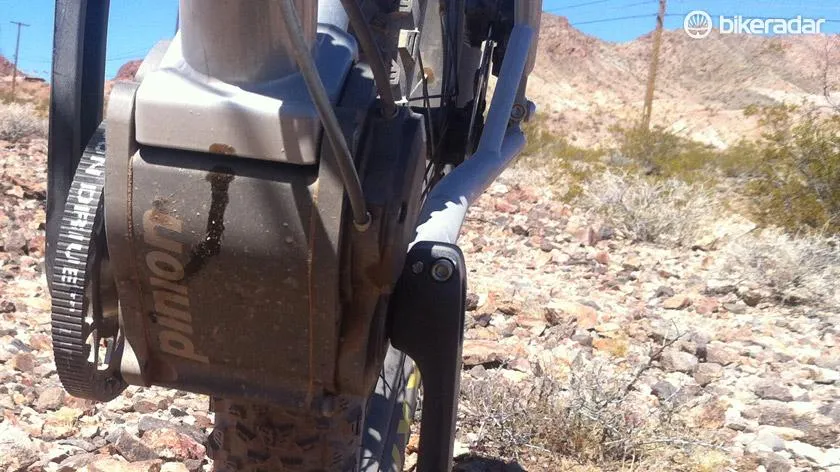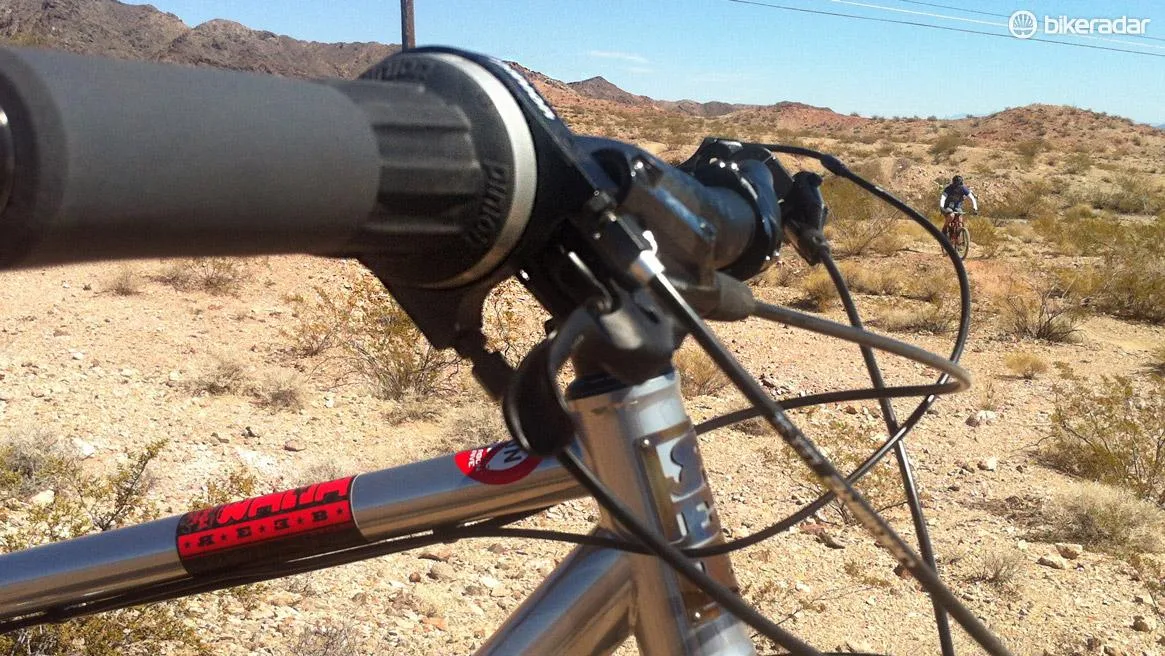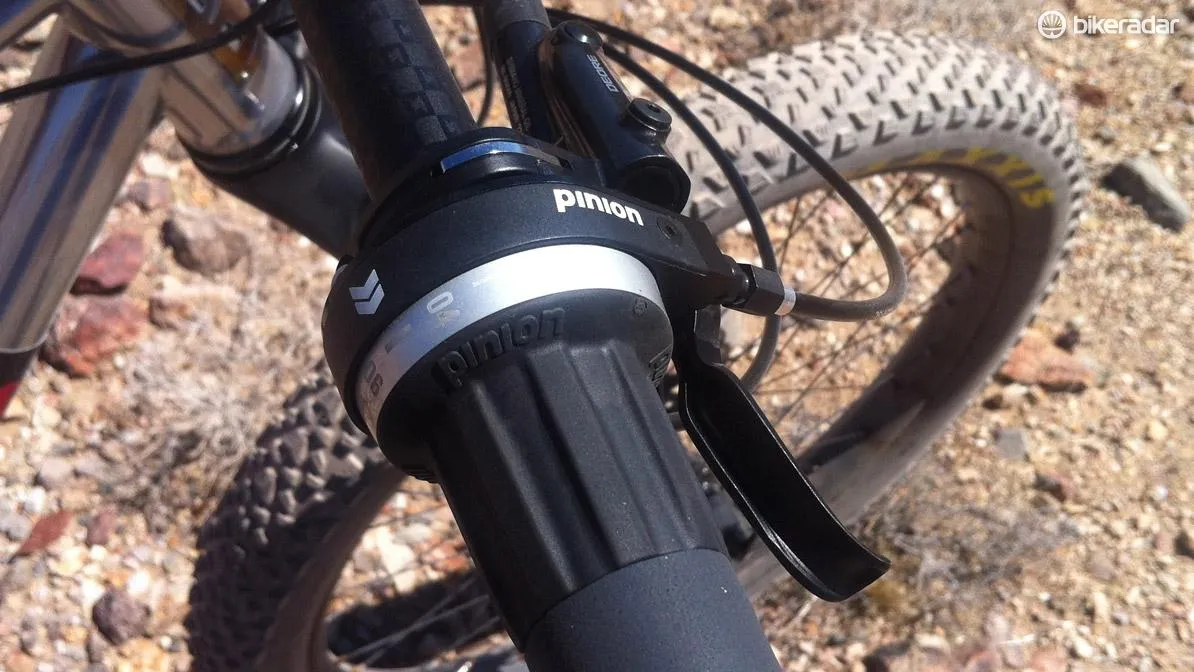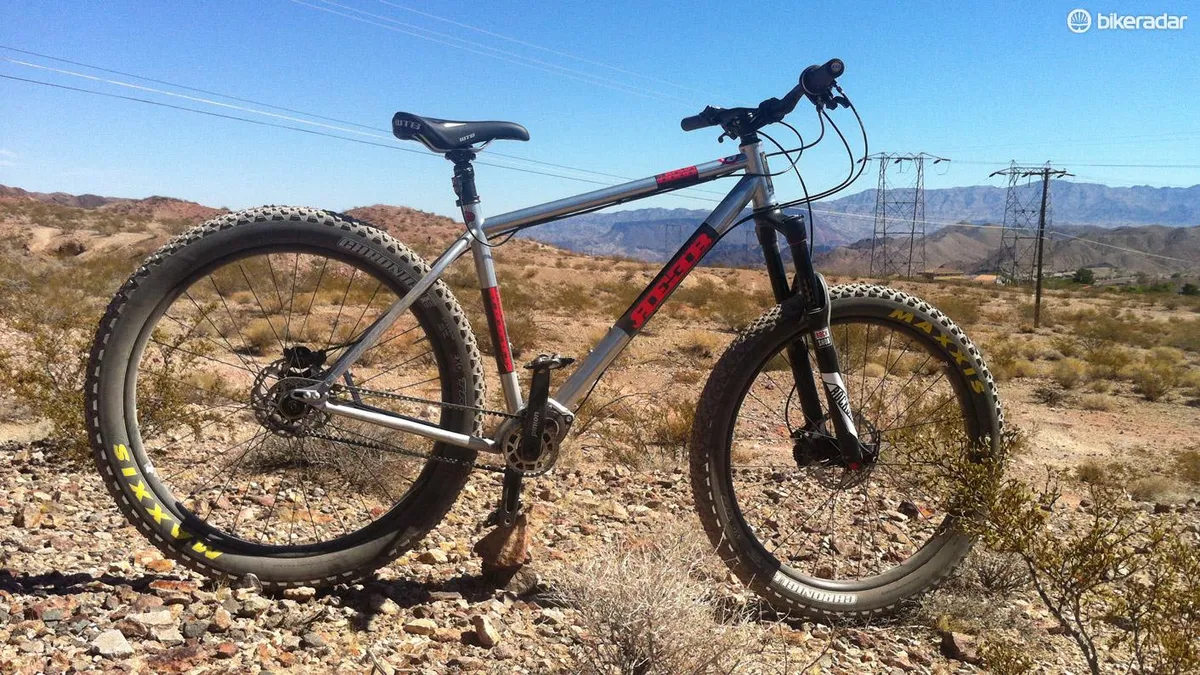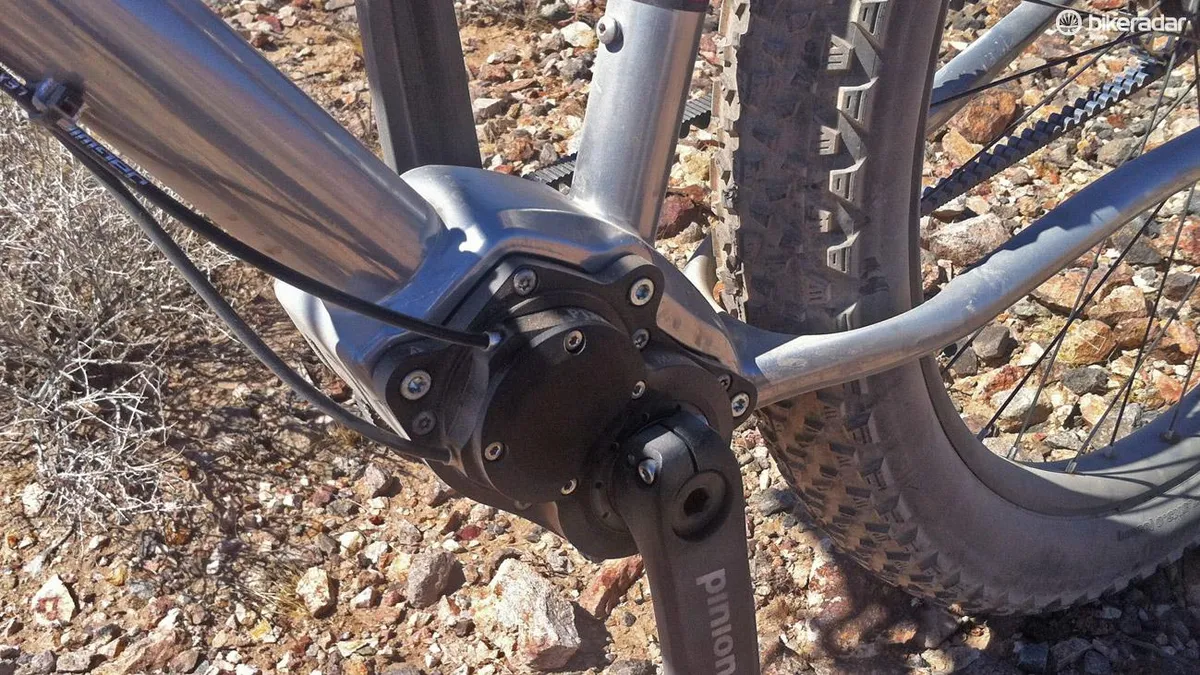While the promise of gearboxes has been on the horizon for seemingly forever, Pinion has taken one realistic step closer to this becoming reality with its frame-mounted P1.12. Sitting between the cranks, it claims a huge gear range, less maintenance and better efficiency than any internally geared system before it.
- BikeRadar’s 2016 Interbike coverage
- Gearbox mountain bikes: mad science or the way forward?
- Nicolai Ion GPI: the gearbox MTB of the future?
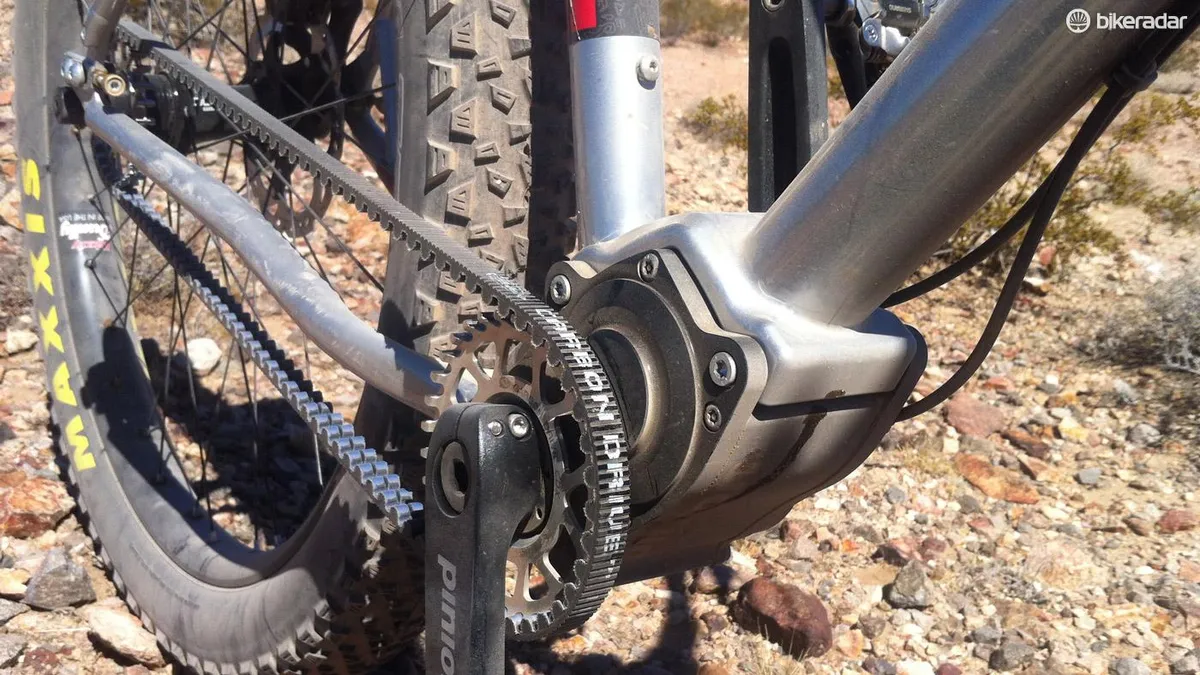
Pinion offers a range of gearboxes, two 9-speed versions, a 12-speed version, and a massive 18-speed internal gearbox. I tested the 12-speed version powered by a Gates Carbon belt drive on a Reeb Cycles 27.5+ hardtail.
Pinion P1.12 gearbox spec overview
- 12-speeds
- 17.7% spacing between gears
- 600% overall ratio
- Gearbox weight: 2,350g
- Q-factor: 174mm
- Made in Germany
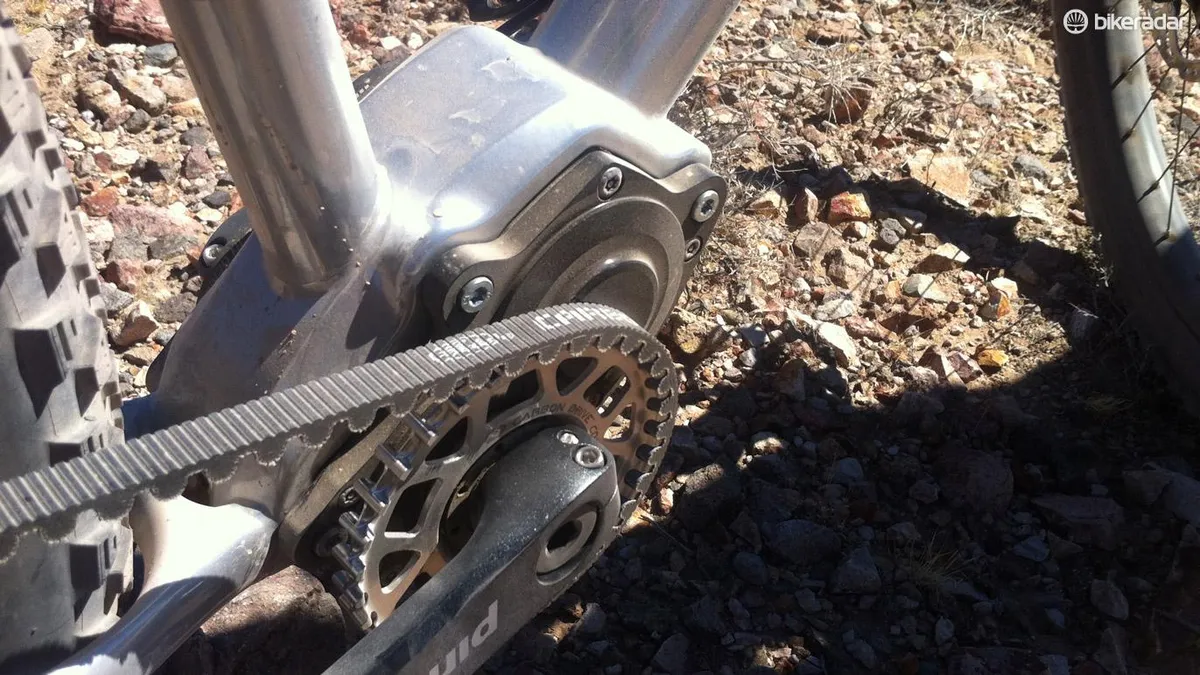
Pinion P1.12 gearbox ride impression
The Pinion requires a unique frame, and the frame connection is called the "Pinion Standard" — thankfully all of Pinions gearboxes use the same standard.
As far as placement on the bike, I think it's ideal. The weight is between the cranks, centered and low. Gear changes happen via a Pinion rotary shifter (think gripshift), with two cables exiting and working their way down the down tube to the gearbox.
Overall, the gearbox system is clean and relatively small. It doesn't interrupt the lines of the bike too much.
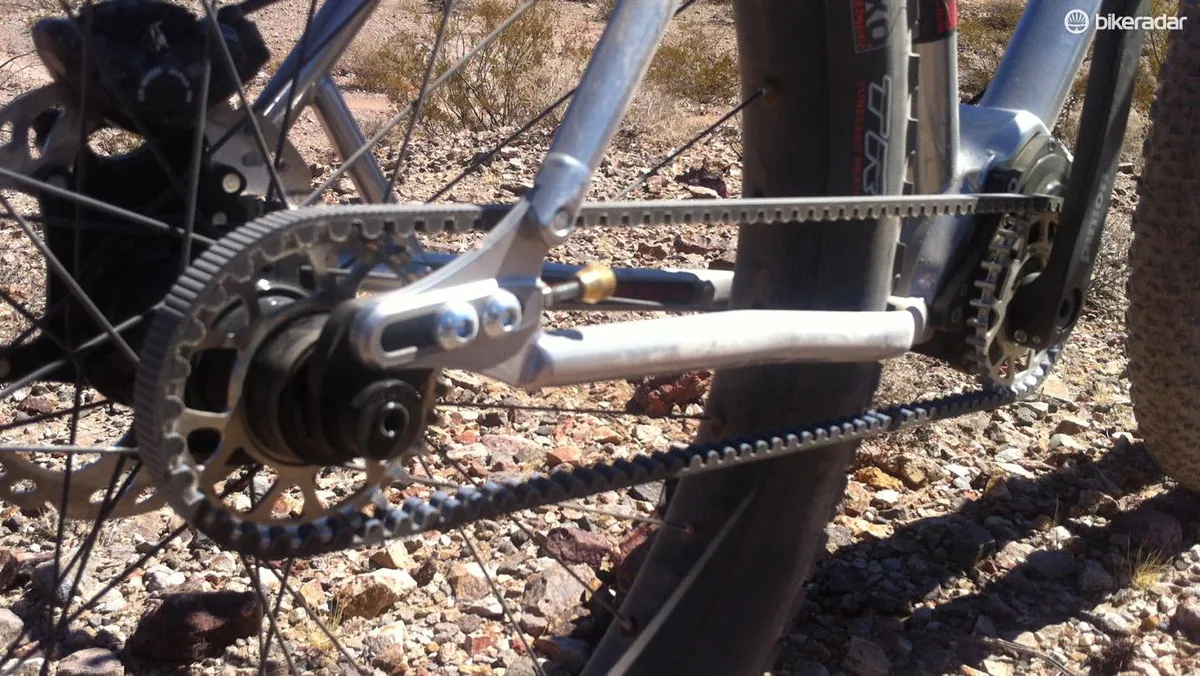
Riding the gearbox
I've ridden a few gearboxes and typically have come away wishing for less noise, less drag and a better shifter. On my first ride with the Pinion in the harsh, rocky desert, it was noticeable right away that the system was quiet. It was also definitely more drag-free than other internal gear boxes, such as a Rohloff or Nuvinci.
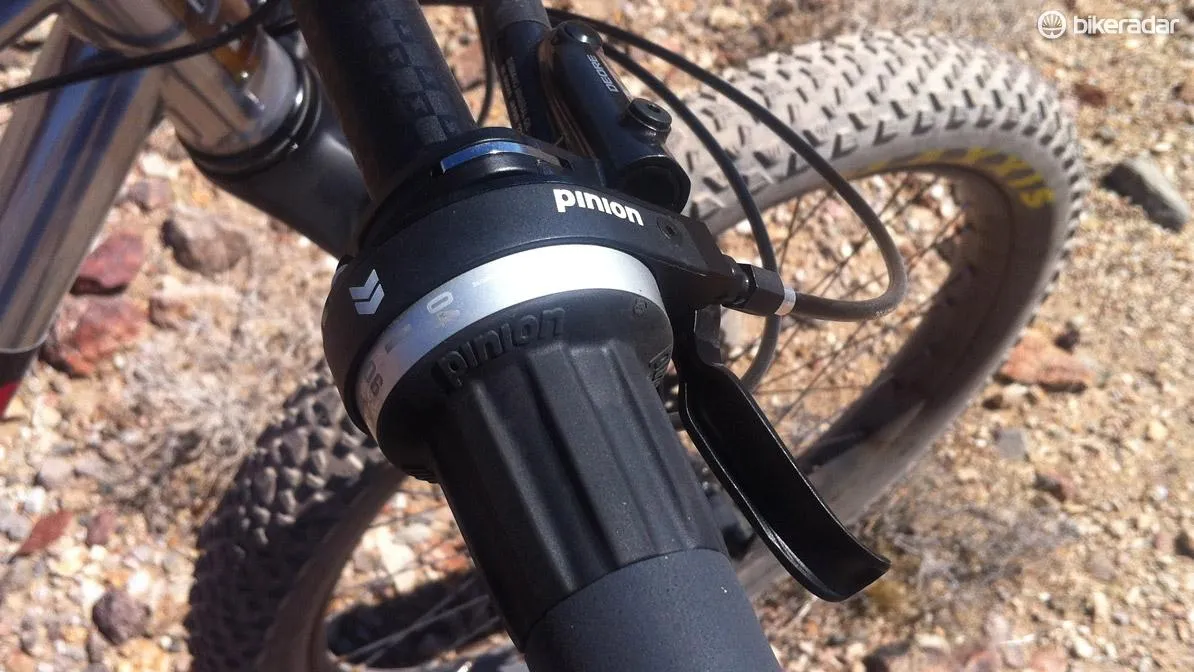
Onto the shifter. While better than other internal drivetrain's gear changers, the Pinion rotary shifter isn't as refined or intuitive as I've come to expect from Shimano and SRAM.
The big learning curve with the Pinion system is that you have to pause pedaling when shifting, especially when going to easier gears. It's not as reluctant to shift into harder gears, but it is different compared with Shimano or SRAM where you can simply keep on the gas and grab gears simultaneously.
However, by the middle of the ride, I was adjusting and even found it was a very strong reminder to keep looking up, to be reading the terrain ahead and preparing before you get to elevation changes. You know what I'm saying, basically how to ride properly.
It is worth noting that you can grab or dump all the gears at once, in a full twist and that it's faster than any trigger when swapping from one end of the gear range to the other.

Speaking of gears, the range for this 12-speed gearbox is a whopping 600%. That's more than SRAM Eagle 12-speed (500%) and in my opinion way more than adequate.
The spacing between the gears is equal at 17.7% per shift. Shifting into the lowest (easiest) gear it almost felt like the belt had come off, that is until my speed slowed enough for the gearing to catch up. From there, I slowly winched my way up a steep hill. If that range isn't enough, the gearing can be further customized through the cogs on the belt drive.
Pinion P1.12 gearbox vs. the competition
Internally geared drivetrains are typically rear hub mounted. This places a lot of weight in the rear of the bike and often compromises the ride. But hub mounting allows use with regular frames, whereas the Pinion requires a unique frame.
That uniqueness and being centrally mounted are the main differentiating factors. The other major differences are the Pinion's shifting quality is noticeably smoother, quieter and has less drag. Has Pinion perfected internal gearing? Not in my opinion, but they are on the right path.
